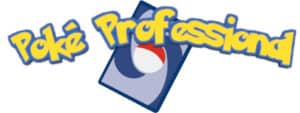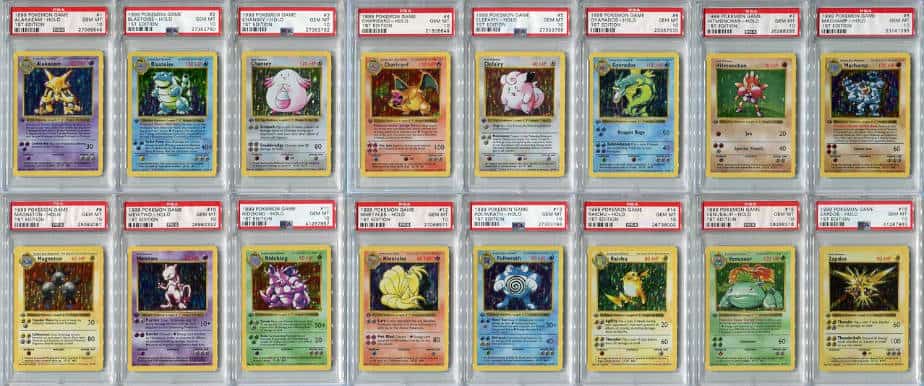
Base Set is the first Pokémon expansion released for the Pokémon Trading Card Game. It was first released on October 20th, 1996 in Japan, and January 9th, 1999, for the rest of the world. The cards were produced under contracts by Media Factory and Wizards of the Coast (WotC). Media Factory produced the Japanese versions of the cards. Because of this Base Set is known to many collectors as a WotC era set.
In this guide, I will answer many questions including:
- How to Identify a Base Set Card
- What Cards are in Base Set?
- What Languages was Base Set Printed In?
- What Variants Did Base Set Have?
- What is a No Rarity Symbol Base Set Card?
- What is a 1st Edition Base Set Card?
- What is a Shadowless Base Set Card?
- What is a 1999-2000 Base Set Card?
- What is an Unlimited Base Set Card?
- What is a Trainer Deck Card?
- What are the Error/Misprint Cards in Base Set?
- What Other Variants are in Base Set?
- 1st Edition Stamp Variants
- Sealed Product
The goal of this guide is to take anyone from beginner to expert on Pokémon Base Set. While not everything can be covered, I will provide extra links to help get just about the information you could possibly want.
How to Identify a Base Set Card
A Base Set card is best identified by its lack of set symbol as well as it’s /102 set number in the bottom right corner of the card. If you’ll look at the image below I’ve highlighted these two identifying characteristics.
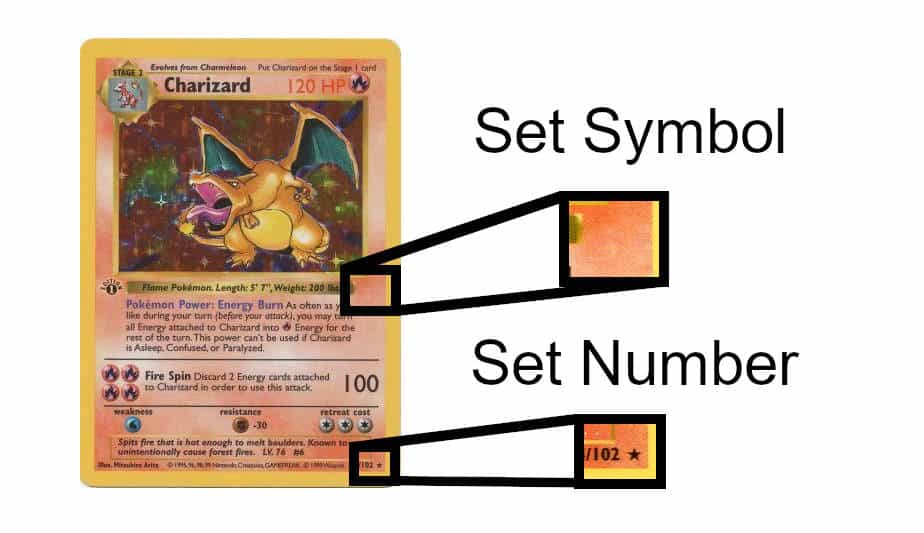
Base Set cards aren’t the only cards without set symbols, due to a printing error some English Jungle set cards were produced without a set symbol. However, the set number is /64 for Jungle so it’s easy to tell the difference.
Japanese Base Set doesn’t have a set number, the only way to identify a Japanese Base Set card is the lack of a set symbol.
What Cards are in Base Set?
There are 102 cards completing Base Set. 69 are Pokémon, 26 are trainer cards, and 6 are energy cards. 16 cards are holographic foil rares, 16 rares, 32 uncommon, 32 commons, and 6 no rarity energy cards. The complete list of cards are in the table below:
| Image | Card Name | Card Type | Rarity | Set Number |
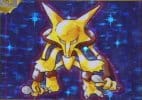 | Alakazam | Pokémon | Holographic Foil Rare | 1/102 |
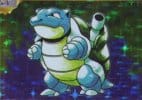 | Blastoise | Pokémon | Holographic Foil Rare | 2/102 |
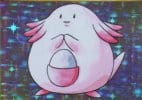 | Chansey | Pokémon | Holographic Foil Rare | 3/102 |
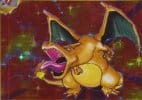 | Charizard | Pokémon | Holographic Foil Rare | 4/102 |
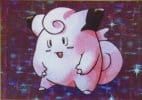 | Clefairy | Pokémon | Holographic Foil Rare | 5/102 |
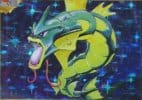 | Gyarados | Pokémon | Holographic Foil Rare | 6/102 |
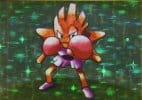 | Hitmonchan | Pokémon | Holographic Foil Rare | 7/102 |
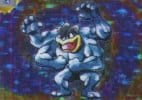 | Machamp | Pokémon | Holographic Foil Rare | 8/102 |
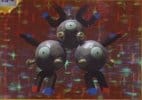 | Magneton | Pokémon | Holographic Foil Rare | 9/102 |
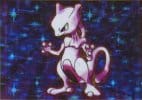 | Mewtwo | Pokémon | Holographic Foil Rare | 10/102 |
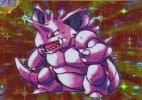 | Nidoking | Pokémon | Holographic Foil Rare | 11/102 |
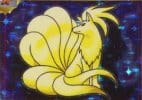 | Ninetales | Pokémon | Holographic Foil Rare | 12/102 |
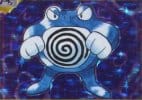 | Poliwrath | Pokémon | Holographic Foil Rare | 13/102 |
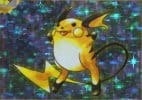 | Raichu | Pokémon | Holographic Foil Rare | 14/102 |
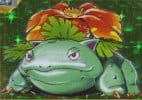 | Venusaur | Pokémon | Holographic Foil Rare | 15/102 |
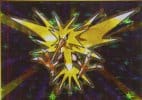 | Zapdos | Pokémon | Holographic Foil Rare | 16/102 |
 | Beedrill | Pokémon | Rare | 17/102 |
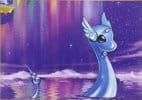 | Dragonair | Pokémon | Rare | 18/102 |
 | Dugtrio | Pokémon | Rare | 19/102 |
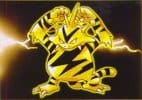 | Electabuzz | Pokémon | Rare | 20/102 |
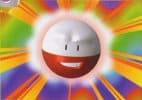 | Electrode | Pokémon | Rare | 21/102 |
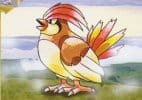 | Pidgeotto | Pokémon | Rare | 22/102 |
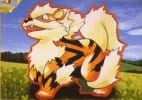 | Arcanine | Pokémon | Uncommon | 23/102 |
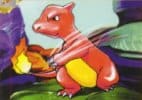 | Charmeleon | Pokémon | Uncommon | 24/102 |
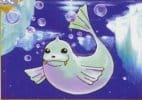 | Dewgong | Pokémon | Uncommon | 25/102 |
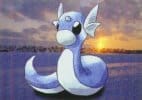 | Dratini | Pokémon | Uncommon | 26/102 |
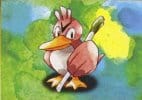 | Farfetch’d | Pokémon | Uncommon | 27/102 |
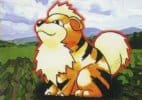 | Growlithe | Pokémon | Uncommon | 28/102 |
 | Haunter | Pokémon | Uncommon | 29/102 |
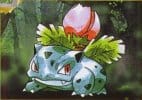 | Ivysaur | Pokémon | Uncommon | 30/102 |
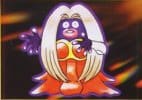 | Jynx | Pokémon | Uncommon | 31/102 |
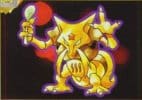 | Kadabra | Pokémon | Uncommon | 32/102 |
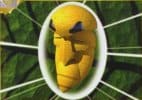 | Kakuna | Pokémon | Uncommon | 33/102 |
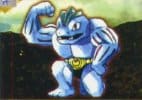 | Machoke | Pokémon | Uncommon | 34/102 |
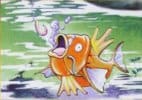 | Magikarp | Pokémon | Uncommon | 35/102 |
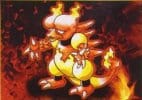 | Magmar | Pokémon | Uncommon | 36/102 |
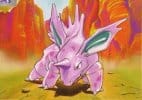 | Nidorino | Pokémon | Uncommon | 37/102 |
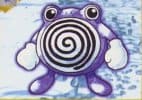 | Poliwhirl | Pokémon | Uncommon | 38/102 |
 | Porygon | Pokémon | Uncommon | 39/102 |
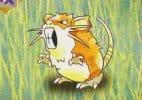 | Raticate | Pokémon | Uncommon | 40/102 |
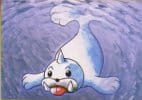 | Seel | Pokémon | Uncommon | 41/102 |
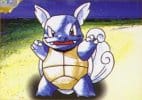 | Wartortle | Pokémon | Uncommon | 42/102 |
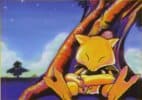 | Abra | Pokémon | Common | 43/102 |
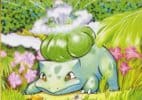 | Bulbasaur | Pokémon | Common | 44/102 |
 | Caterpie | Pokémon | Common | 45/102 |
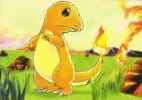 | Charmander | Pokémon | Common | 46/102 |
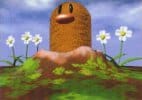 | Diglett | Pokémon | Common | 47/102 |
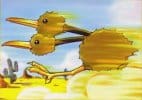 | Doduo | Pokémon | Common | 48/102 |
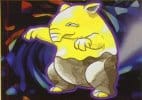 | Drowzee | Pokémon | Common | 49/102 |
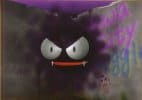 | Gastly | Pokémon | Common | 50/102 |
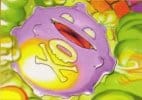 | Koffing | Pokémon | Common | 51/102 |
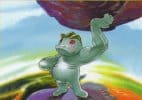 | Machop | Pokémon | Common | 52/102 |
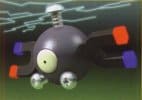 | Magnemite | Pokémon | Common | 53/102 |
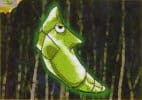 | Metapod | Pokémon | Common | 54/102 |
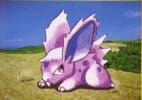 | Nidoran♂ | Pokémon | Common | 55/102 |
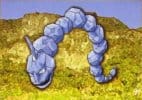 | Onix | Pokémon | Common | 56/102 |
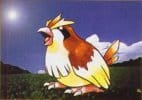 | Pidgey | Pokémon | Common | 57/102 |
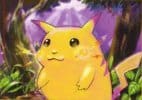 | Pikachu | Pokémon | Common | 58/102 |
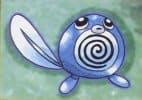 | Poliwag | Pokémon | Common | 59/102 |
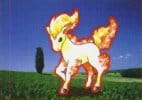 | Ponyta | Pokémon | Common | 60/102 |
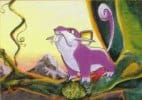 | Rattata | Pokémon | Common | 61/102 |
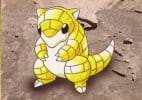 | Sandshrew | Pokémon | Common | 62/102 |
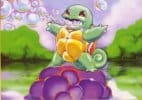 | Squirtle | Pokémon | Common | 63/102 |
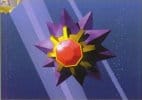 | Starmie | Pokémon | Common | 64/102 |
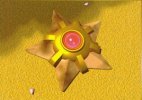 | Staryu | Pokémon | Common | 65/102 |
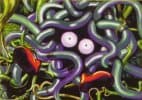 | Tangela | Pokémon | Common | 66/102 |
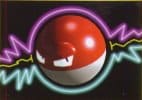 | Voltorb | Pokémon | Common | 67/102 |
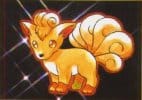 | Vulpix | Pokémon | Common | 68/102 |
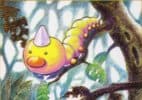 | Weedle | Pokémon | Common | 69/102 |
 | Clefairy Doll | Trainer | Rare | 70/102 |
 | Computer Search | Trainer | Rare | 71/102 |
 | Devolution Spray | Trainer | Rare | 72/102 |
 | Imposter Professor Oak | Trainer | Rare | 73/102 |
 | Itemfinder | Trainer | Rare | 74/102 |
 | Lass | Trainer | Rare | 75/102 |
 | Pokémon Breeder | Trainer | Rare | 76/102 |
 | Pokémon Trader | Trainer | Rare | 77/102 |
 | Scoop Up | Trainer | Rare | 78/102 |
 | Super Energy Removal | Trainer | Rare | 79/102 |
 | Defender | Trainer | Uncommon | 80/102 |
 | Energy Retrieval | Trainer | Uncommon | 81/102 |
 | Full Heal | Trainer | Uncommon | 82/102 |
 | Maintenance | Trainer | Uncommon | 83/102 |
 | Plus Power | Trainer | Uncommon | 84/102 |
 | Pokémon Center | Trainer | Uncommon | 85/102 |
 | Pokémon Flute | Trainer | Uncommon | 86/102 |
 | Professor Oak | Trainer | Uncommon | 87/102 |
 | Pokédex | Trainer | Uncommon | 88/102 |
 | Revive | Trainer | Uncommon | 89/102 |
 | Super Potion | Trainer | Uncommon | 90/102 |
 | Bill | Trainer | Common | 91/102 |
 | Energy Removal | Trainer | Common | 92/102 |
 | Gust of Wind | Trainer | Common | 93/102 |
 | Potion | Trainer | Common | 94/102 |
 | Switch | Trainer | Common | 95/102 |
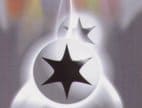 | Double Colorless | Energy | Uncommon | 96/102 |
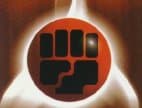 | Fighting | Energy | 97/102 | |
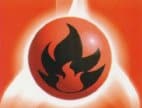 | Fire | Energy | 98/102 | |
 | Grass | Energy | 99/102 | |
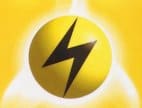 | Lightning | Energy | 100/102 | |
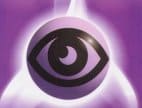 | Psychic | Energy | 101/102 | |
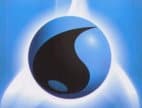 | Water | Energy | 102/102 |
What Languages was Base Set Printed In?
Base Set was printed in Chinese, Dutch, English, French, German, Italian, Japanese, Portuguese, Spanish, and Korean. From a collector’s perspective, Korean cards are the hardest of the languages to find. The most collected languages are English and Japanese.
What Variants Did Base Set Have?
Base Set has the most variants of any released set. They are:
- No rarity symbol Japanese cards
- 1st edition cards
- Shadowless English cards
- Unlimited cards
- 1999-2000 English cards
- Trainer deck cards
- Error/Misprint cards.
These variants happened though many different languages. For example, 1st edition cards exist for every language except Japanese, but Japanese is the only language to have no rarity, 1999-2000 cards are only special for English and Spanish, and trainer deck cards were only produced in English. I’ll go over these variants in more detail in the sections below.
What is a No Rarity Symbol Base Set Card?
Due to production changes, 96 cards in the Japanese Base Set were produced without their rarity symbols, these cards are no rarity symbol cards. After these production changes, rarity symbols were added to every Japanese Base Set card except Fighting Energy, Fire Energy, Grass Energy, Lightning Energy, Psychic Energy, and Water Energy. That first print run of Japanese cards are very sought after by collectors and is often referred to as, no rarity, which is short for no rarity symbol.
The rarity symbol of a card can be located on the bottom right corner. There will either be a star, diamond, or circle. These marks identify the cards as either rare, uncommon, or common respectively. To help identify if you have a no rarity symbol I’ve added the image below to help locate a rarity symbol or lack thereof.
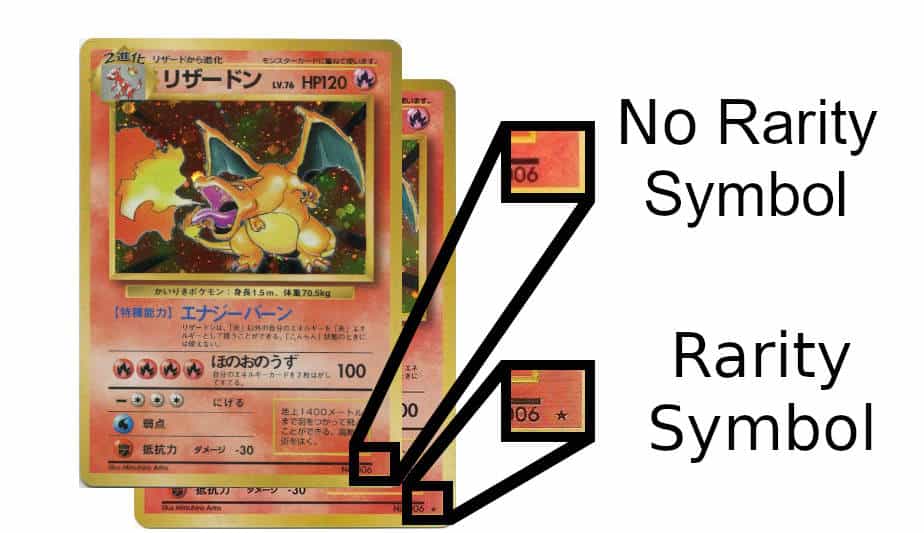
What is a 1st Edition Base Set Card?
1st edition refers to the first release of the card, for base set it’s identified by the 1st edition stamp on the right side of the card in the center. If the card has an edition stamp with a circle and a 1 inside, it’s a 1st edition card. I’ve added the image below to help locate a 1st edition stamp. If your card lacks a 1st edition stamp it’s one of the other variants of cards.
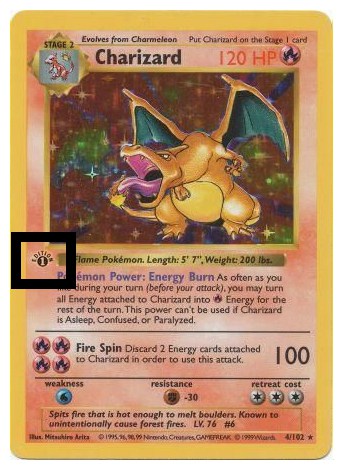
The exception to the rule:
Base Set Machamp was always printed with a 1st edition stamp on it, except for the Trainer Deck A version, which is discussed in a section below. Because Machamp always has a 1st edition stamp on it, it’s technically 1st edition, but it should be noted that the shadowless version is the first print version. (See the next section for help on what shadowless means.)
This is true for every language except for Japanese. In Japan Media Factory didn’t produce 1st edition cards; however, it is still possible to identify the first print for the Japanese Base Set, which was discussed in the section above.
What is a Shadowless Base Set Card?
There were 8 print runs of English Base Set, the 1st print run was done with a template that looks like the cards below:
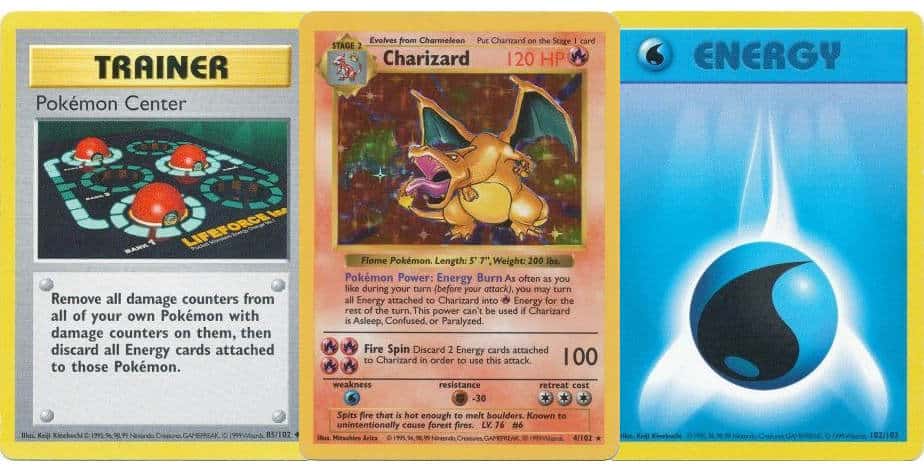
The 2nd-7th print run had templates that look like these:
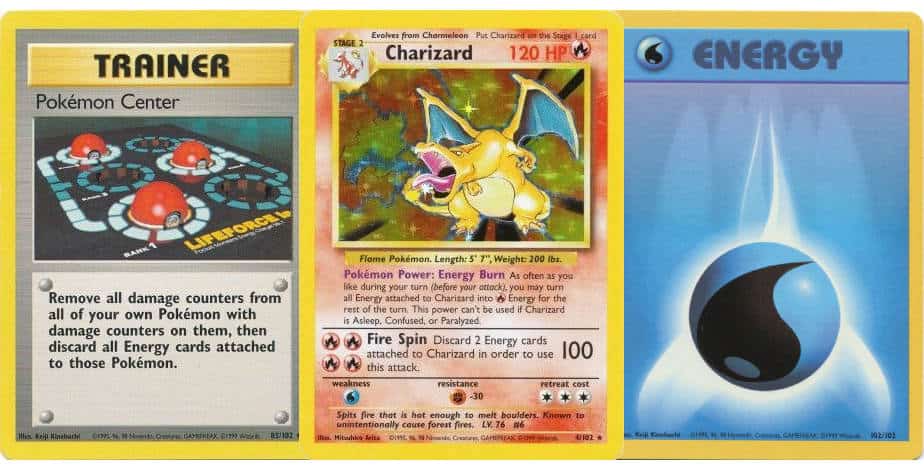
We’ll talk about the 8th print run later in this article.
The first print was used for both 1st edition and shadowless cards. The story goes Wizards of the Coast (WotC) produced the first batch of Pokémon cards. Many of the cards got 1st edition stamps applied to them, making them 1st edition, which we discussed in the section above. The remaining cards that weren’t stamped became known as Shadowless cards. When WotC went to produce the second print run they changed the template of the cards. Many collectors started to notice the differences in the cards. The most noticeable characteristic was the newly added shadow box. Many collectors started identifying the cards without shadow boxes as Shadowless cards, while the other became known as Unlimited edition.
Shadowless and Unlimited cards have many things different.
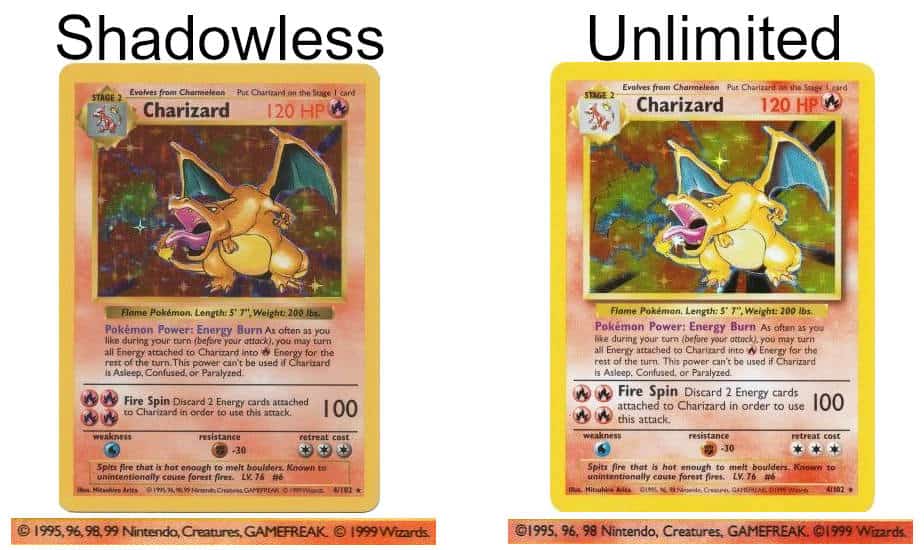
- The HP text is bolder for Unlimited
- On Unlimited, the image of the card is zoomed out
- Shadowless has more vibrant colors
- To the right of the image’s art box, there’s no drop shadow for shadowless
- The copyright date reads ©1995, 96, 98 Nintendo, Creatures, GAMEFREAK, ©1999 on Unlimited and ©1995, 96, 98, 99 Nintendo, Creatures, GAMEFREAK, ©1999 for shadowless. Notice the added 99 in the text, this is the best identifying characteristic for all shadowless cards.

So, the reality is Shadowless cards are the first print run of the Base Set but lack the 1st edition stamps. They’re best identified by their copyright date of ©1995, 96, 98, 99 Nintendo, Creatures, GAMEFREAK, © 1999. Shadowless cards only occurred for English Base Set.
What is a 1999-2000 Base Set Card?
If you read the “What is a Shadowless Base Set Card” section above you’ll remember I said there were 8 print runs of Base Set but said I would talk about the 8th print run later. Here is an image of 8th print run cards:
Comparing it to and Unlimited card, it’s hard to see the differences except for the copyright date.
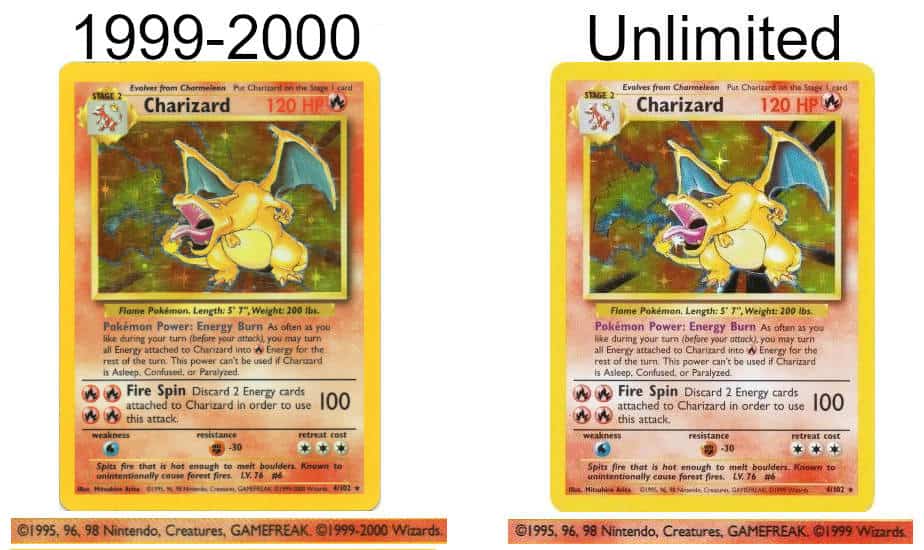
- The unlimited reads ©1995, 96, 98 Nintendo, Creatures, GAMEFREAK, ©1999 while the 1999-2000 cards read ©1995, 96, 98 Nintendo, Creatures, GAMEFREAK, ©1999-2000. It’s a small change, but big for collectors.
- The other change is very slight coloring differences that are often hard to notice in pictures.
1999-2000 cards have a few other names I want to discuss, the first being they’re commonly referred to as 4th print. This is because some individuals without extensive knowledge of the hobby think there are 4 prints of Pokémon. They refer to 1st edition as the first print, shadowless as the 2nd, unlimited as the 3rd and 1999-2000 as the 4th. If you’ve read this article you’ll know that far from true. The other common name is UK release. When 1999-2000 cards were first discovered they were first thought to only be available from the UK; however, these cards can be found in sealed products created for Australia and the USA as well, so this name isn’t very accurate either.
Many other language Base Set cards also had 1999-2000 copyright dates, those include Chinese, Dutch, Italian, Korean, and Spanish. However, only the Spanish printed cards had both 1999-2000 copyright date and 1999, all the others only had 1999-2000.
Spanish cards can also have a 1st edition stamp with both copyright dates. This gives Spanish Base Set four variants.
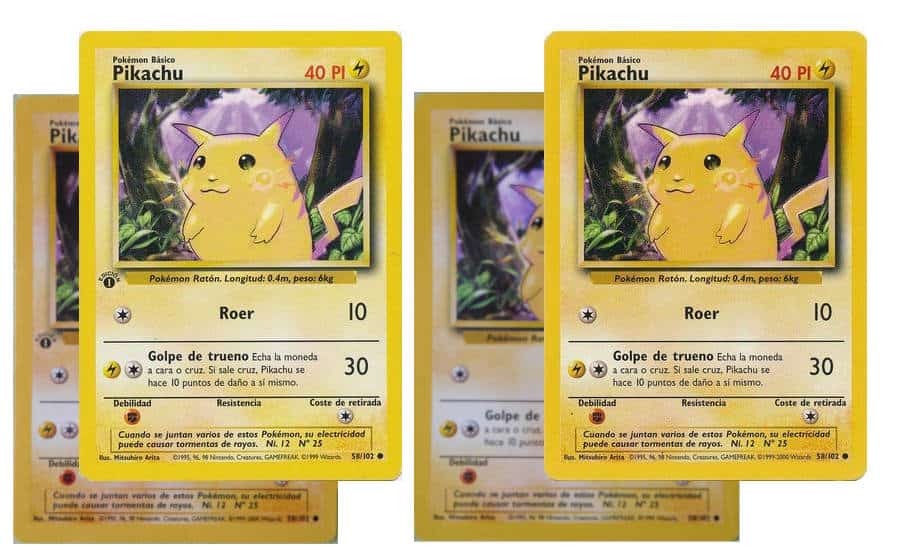
- 1st edition 1999 copyright
- 1st edition 1999-2000 copyright
- Unlimited 1999 copyright
- Unlimited 1999-2000 copyright
In conclusion, 1999-2000 cards are cards with the copyright date reading ©1995, 96, 98 Nintendo, Creatures, GAMEFREAK, ©1999-2000.

What is an Unlimited Base Set Card?
Unlimited cards are considered any card that isn’t 1st edition or special released. So in the technical stance, every card that’s not 1st edition is unlimited. This includes Shadowless and 1999-2000 copyright dates but doesn’t include 1st edition stamped shadowed Machamp. For this guide, I will ignore this technicality and treat unlimited cards sperate from the other variants.

Unlimited Base Set cards are the most common Base Set cards, they were produced in every language, and are the 2nd-7th print runs for the English set. They lack a 1st edition symbol and have drop shadows to the right of their art boxes. The only exception to this rule is Base Set Machamp, which was only available the 2-Player Starter Set and the 2-Player CD-ROM Starter Set theme decks. In these deck boxes, all Machamps had 1st edition stamps printed on them. Despite the 1st edition stamp Machamps with drop shadows, to many collectors, are considered Unlimited edition.
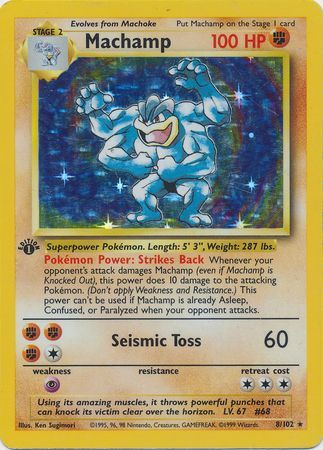
What is a Trainer Deck Card?
Trainer Deck cards come in two versions. Trainer Deck A and Trainer Deck B. Trainer Deck cards were originally produced to help teach people how to play the Pokémon Trading Card Game. Trainer Deck A cards were delivered to league leaders at Pokémon Leagues. These Pokémon Leagues were often held at select card shops such as Toys R’ Us. The cards themselves were never intended to be released for sale to the public; however, when they were no longer needed many league leaders would sell the cards or even gave them away making them available for the general public.
Trainer Deck B, while originally produced for the same intention as Trainer Deck A, was rarely used in Pokémon Leagues and many leagues never got them. For the longest time, it was unknown that Trainer Deck B cards existed. A massive lot of Trainer Deck Bs were discovered in an airport auction, where the individual who bought the auction sold them all. The majority of the boxes that are available to the general public came from there. This is why it’s much more common to find Trainer Deck B cards in unplayed condition, while Trainer Deck A cards were often used and have play wear to them.
When compared to unlimited, no major differences between the cards are noticeable from the front, except for Trainer Deck A Machamp and Trainer Deck B Blastoise. Both Machamp and Blastoise were printed without holographic foil. In the case of Machamp, it was also never given a 1st edition stamp.
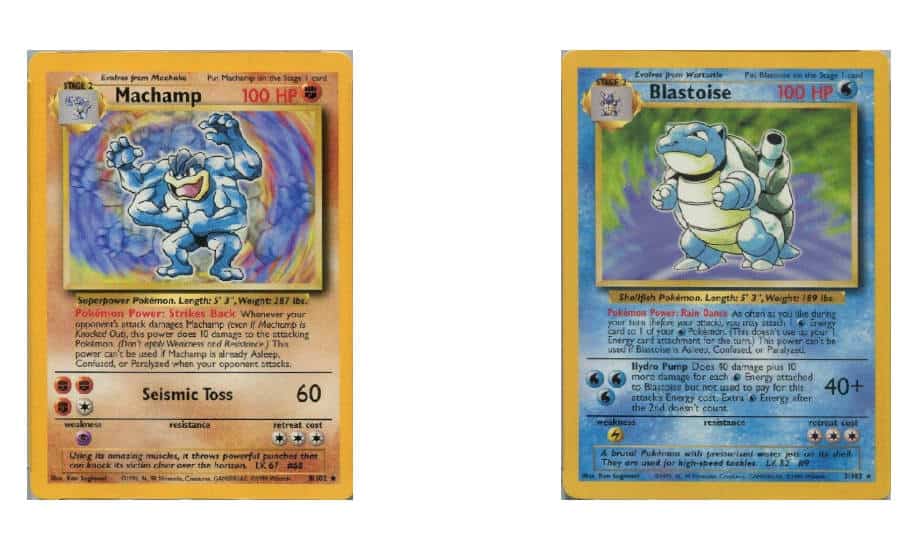
The easiest way to tell if you have a trainer deck a card is by looking at the back of the card. Normally, Pokémon cards have a blue border, with trainer deck cards they have a red border. They also either have Trainer Deck A or Trainer Deck B printed on the back in red. I’ve attached an image below to help show this difference.
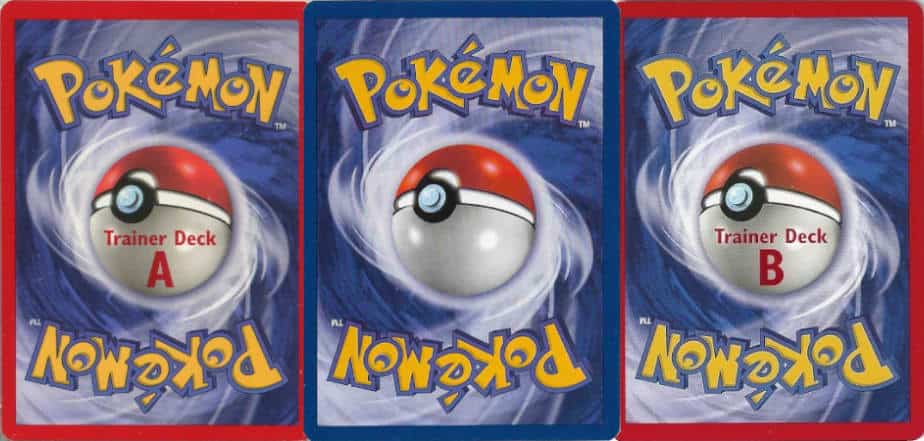
Not all 102 Base Set cards were printed as Trainer Deck A or Trainer Deck B. Here’s a card list of what was included in each deck:
| Trainer Deck A | Trainer Deck B |
|---|---|
| 1 Machamp | 1 Blastoise |
| 2 Machoke | 2 Pidgeotto |
| 2 Raticate | 2 Wartortle |
| 4 Machop | 4 Seel |
| 4 Onix | 4 Pidgey |
| 4 Rattata | 4 Squirtle |
| 4 Sandshrew | 3 Starmie |
| 4 Defender | 4 Staryu |
| 2 Super Potion | 1 Computer Search |
| 4 Potion | 2 Pokémon Trader |
| 2 Switch | 3 Energy Removal |
| 27 Fighting Energy | 3 Switch |
| 27 Water Energy |
What are the Error/Misprint Cards in Base Set?
With Base Set being the first released set, it also includes a lot of errors/misprints. These errors and misprints can be classified into two categories.
- Printed on every card within the same variant(s)
- Only a select number of cards contain the error/Misprint
The big difference between these two classifications is collectors seek out cards with errors/misprints if only a select few have the defect; however, if the error was produced on every version of the same card they aren’t sought after any more than the other cards within the same variant.
Desirable Cards Where Only a Select Number of Cards Contain the Error/Misprint:
No Stage Blastoise
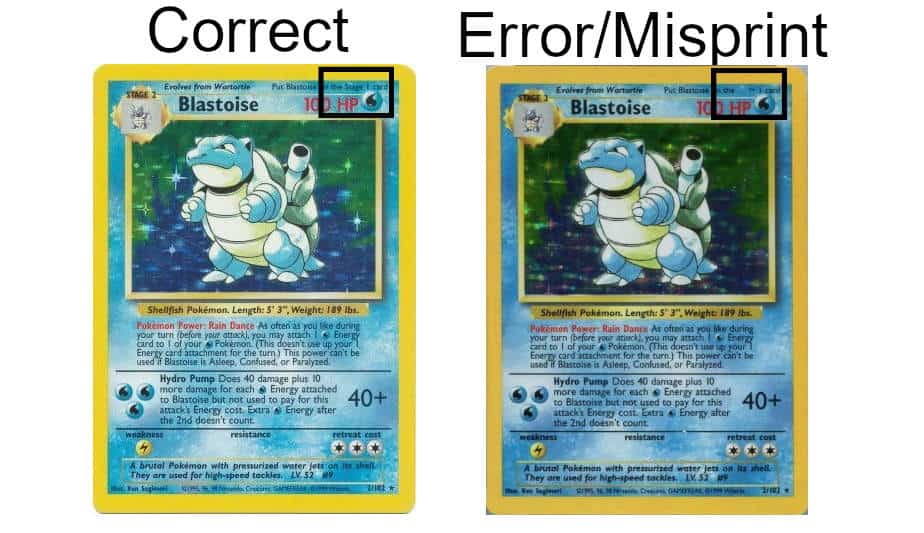
Unlimited versions Blastoise had a printing error/misprint where the word stage was accidentally omitted from the text. These cards were found in some Base Set booster packs.
No Damage Ninetales
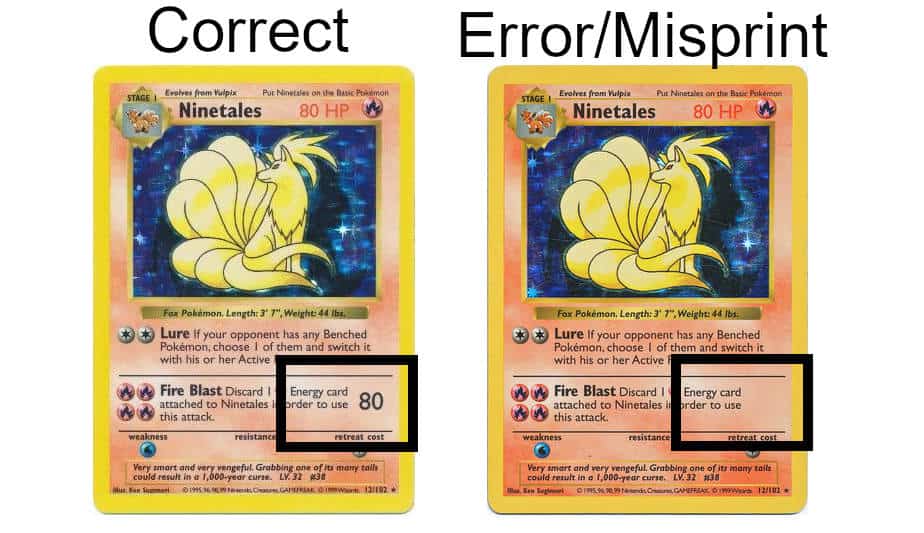
Shadowless versions of Ninetales had a printing error/misprint where the 80 damage was missing from the Fire Blast attack. These cards were found in some Bushfire Theme Decks.
English Evolution Box Wartortle
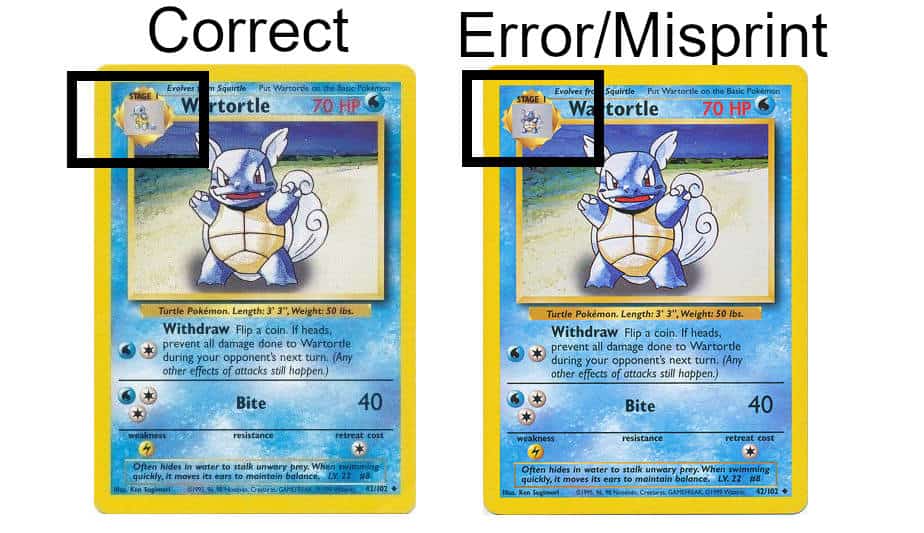
Unlimited versions of English Wartortle had a printing error/misprint where the evolution box contains Wartortle instead of Squirtle. To find these cards you need to get lucky and find one in a booster pack.
Sideways Fighting Energy Diglett
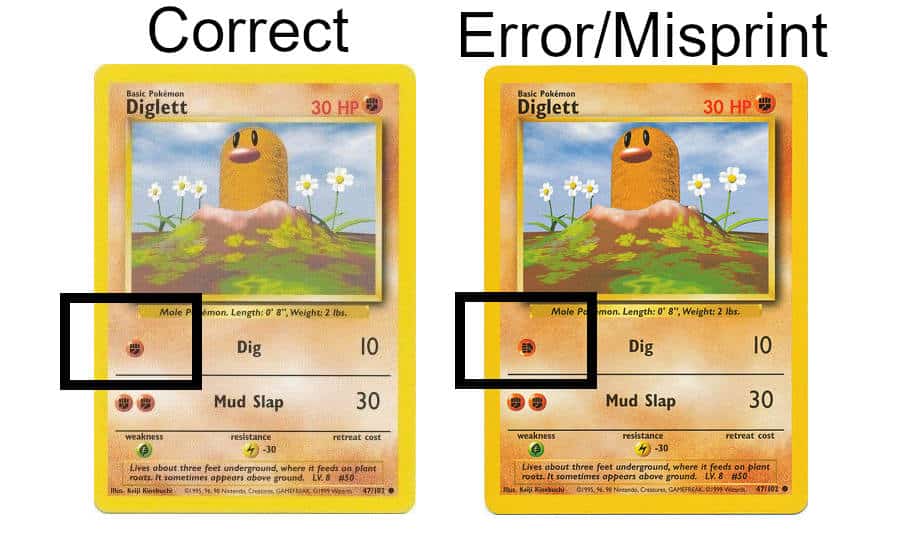
Unlimited versions of Diglett were discovered to have their fighting energy symbol in the Dig attack turned sideways. These cards are only found in 2-Player Starter Set.
Ghost Stamp Pikachu
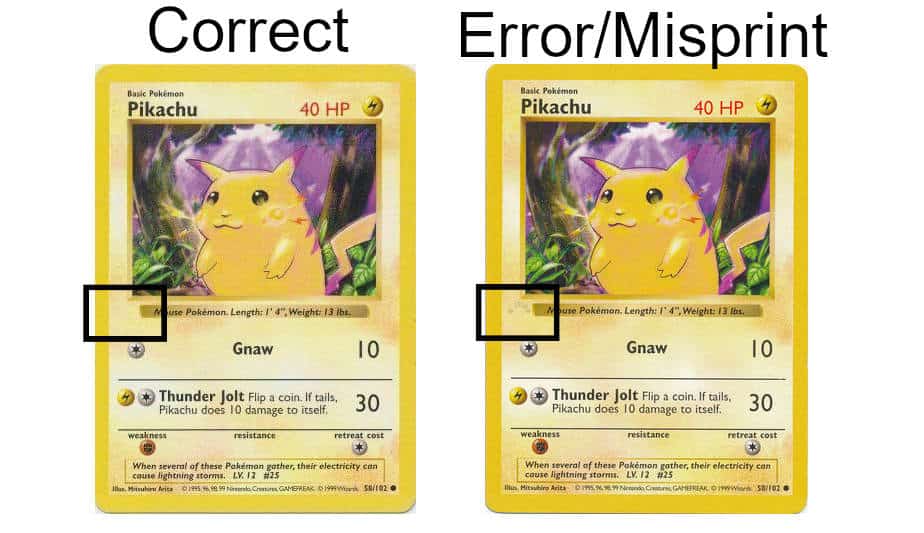
Shadowless Pikachu cards were produced with an outline that reads E ITION where a 1st edition stamp would normally be placed. These cards can be found in Zap theme decks.
Margin Spacing Water Energy
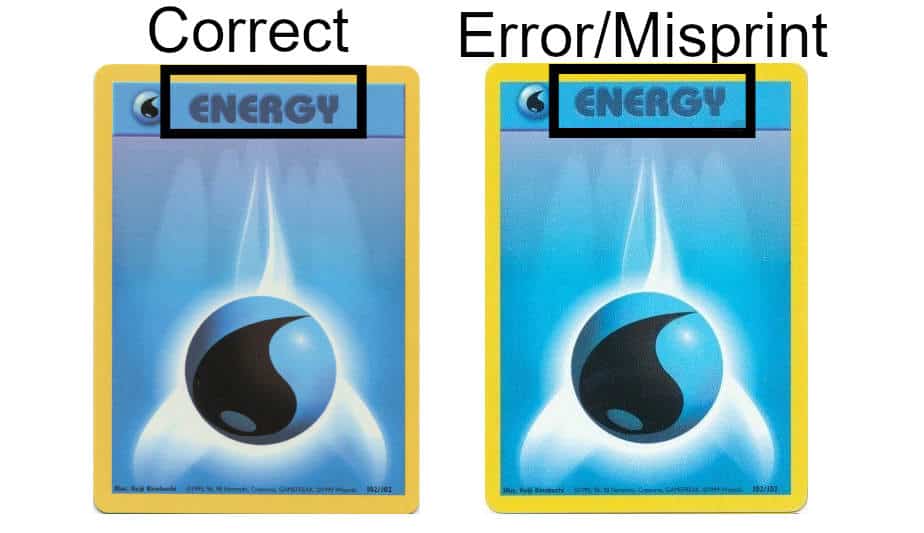
Unlimited Water Energy cards had a large number of their cards printed with a lack of space in the top margin of the card’s name. These cards were found in booster packs.
Cards With Errors/Misprint Printed on Every Card Within the Same Variant(s):
Japanese Evolution Box Holographic Foil Error
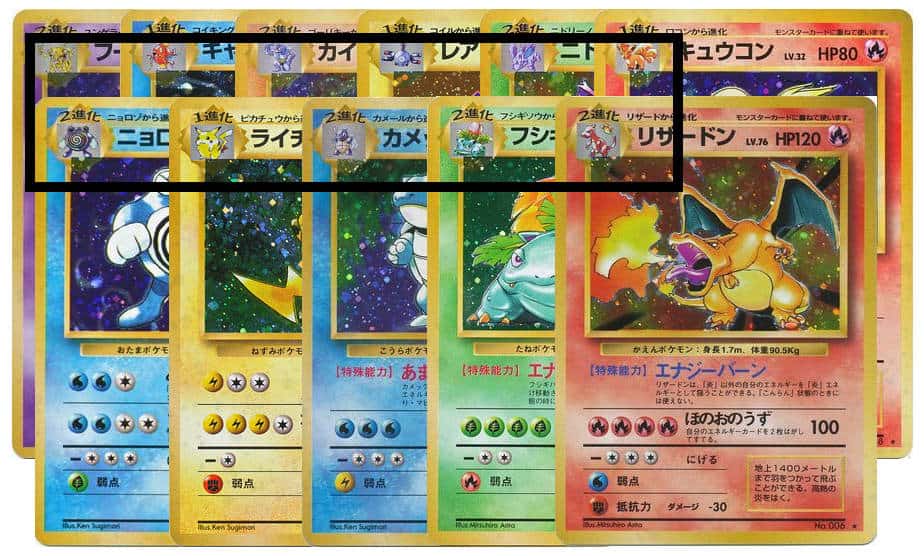
Every Japanese Holographic card that contains an evolution box was printed with the evolution box being covered with holographic foil.
Height and Weight Box Charizard
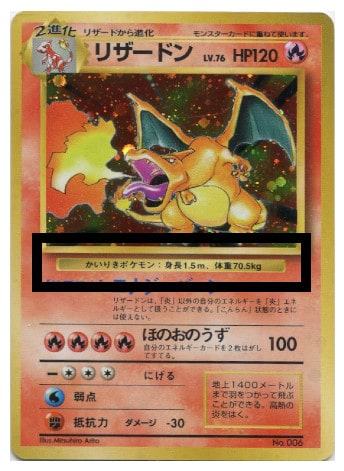
All No Rarity Charizard cards have their height and weight box misprinted. It reads かしいりきボケモン: 身長1.5m. 体重70.5kg. The correct text is かえんボケモン: 身長1.7m. 体重90.5Kg.
Wrong Pokédex Number Raichu
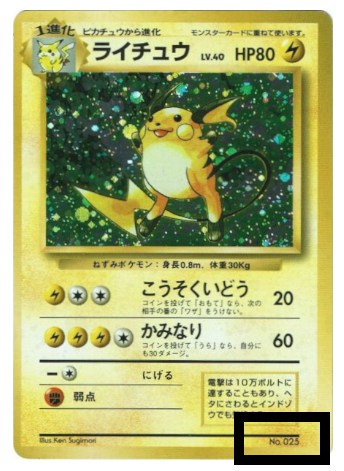
All No Rarity Raichu Cards have the wrong Pokédex number of 25 instead of 26.
Wrong Pokédex Number Vensaur
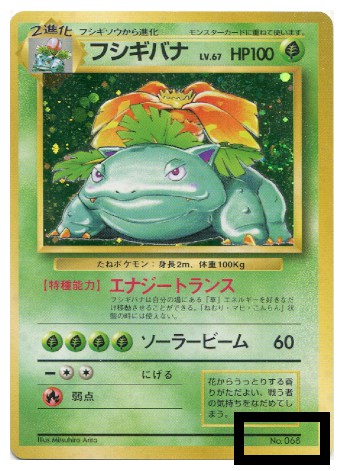
All No Rarity Venusaur cards have the wrong Pokédex number of 68 instead of 3.
6/102 Spacing Error Gyarados
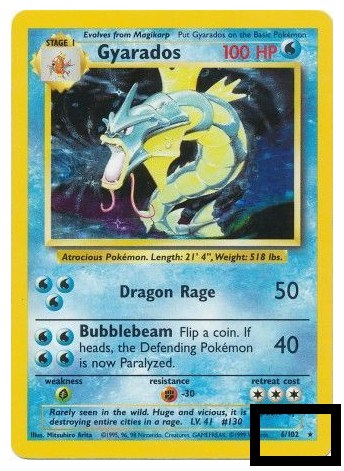
All unlimited and 1999-2000 Gyarados have their set number spaced too far left.
Length Instead of Weight Kakuna
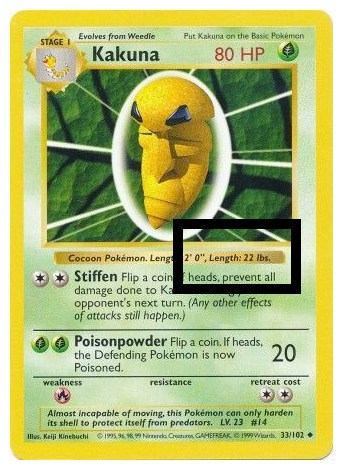
All 1st edition and shadowless Kakuna cards have their weight printed as length.
Portuguese Evolution Box Wartortle
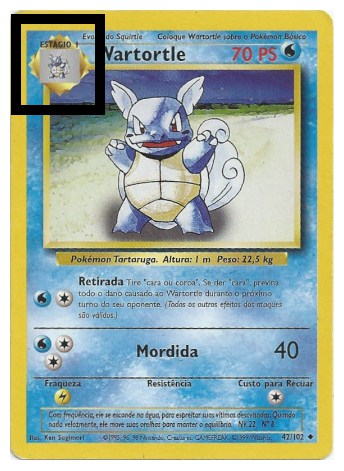
All 1st edition and unlimited versions of Portuguese Wartortle had a printing where the evolution box contains Wartortle instead of Squirtle.
Length instead of Weight Bulbasaur
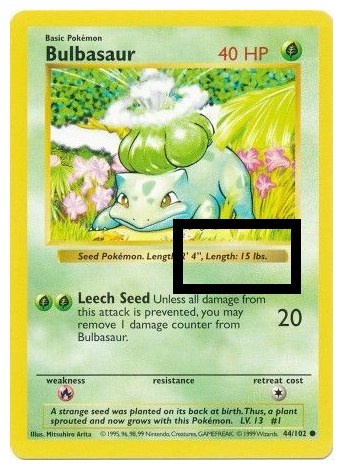
All 1st edition and shadowless Bulbasaur cards have their weight printed as length.
HP 40 Caterpie
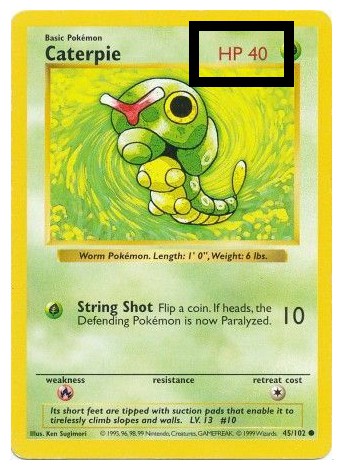
All 1st edition and shadowless Caterpie cards have their HP printed as HP 40 instead of 40 HP.
Wrong Text On Destiny Bond Attack Gastly
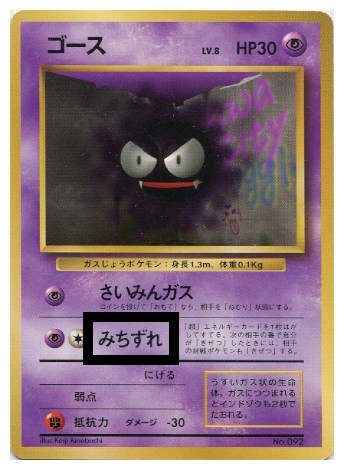
All No Rarity Gastly cards have the wrong text for their Destiny Bond attack it reads みちずれ instead of the correct みちづれ.
HP 70 Metapod
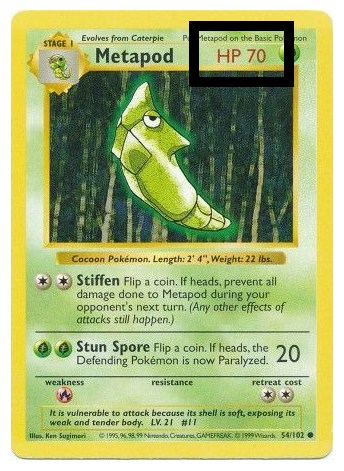
All 1st edition and shadowless Metapod cards have their HP printed as HP 70 instead of 70 HP.
Spacing in name Nidoran♂
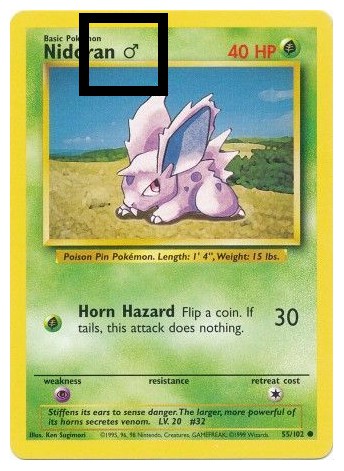
Every Nidoran card, except Chinese, Japanese, and Korean prints, have a space between the n and ♂.
“this attack does nothing” Sandshrew
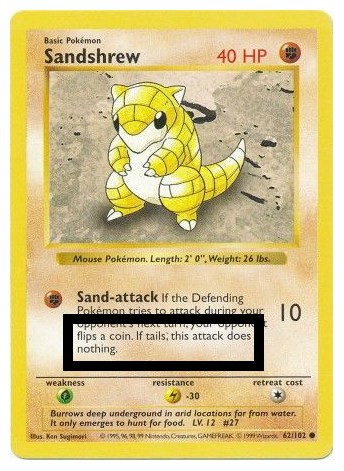
All 1st edition and shadowless Sanshrew cards have text that reads “this attack does nothing” instead of “that attack does nothing”
Monster Ball Voltorb
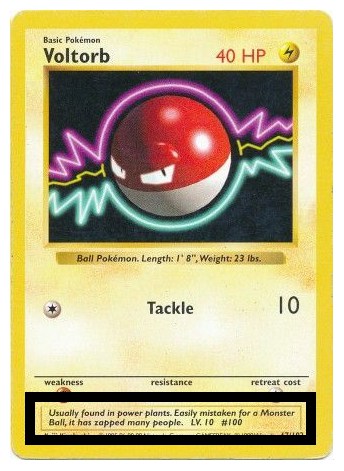
All 1st edition and shadowless Voltorb cards have Monster Ball printed instead of the properly translated Poké Ball.
HP 50 Vulpix
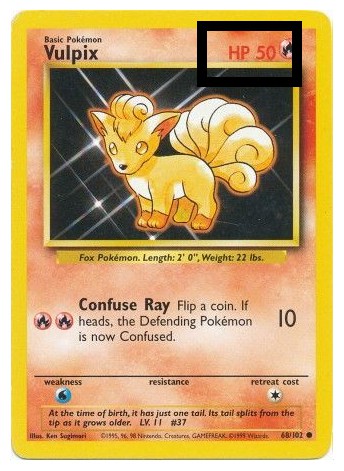
All 1st edition, shadowless, and unlimited Vulpix cards have their HP printed as HP 50 instead of 50 HP.
Impostor Imposter Professor Oak
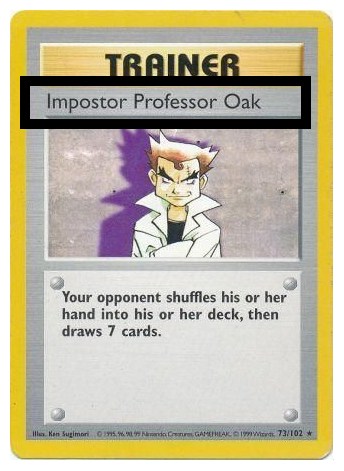
All 1st edition and shadowless Imposter Professor Oak cards were printed as Impostor Professor Oak, while the Unlimited and 1999-2000 were printed as Imposter Professor Oak.
“your own Bench Pokémon” Switch
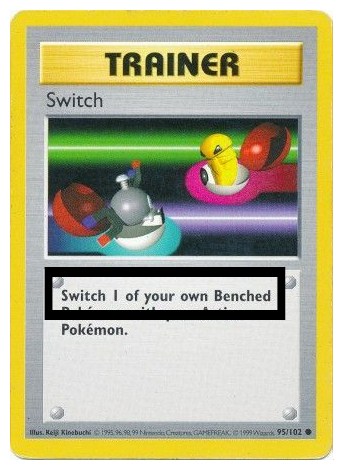
All 1st edition and shadowless Switch cards have text that reads “Switch 1 of your own Bench Pokémon” instead of “Switch 1 of your Bench Pokémon”
Other Error/Misprint Cards
There are a bunch of one-off errors like Pokémon cards being printed with the backs upside down, crimps on cards caused by factory machinery leaving indents, and so many more that aren’t going to be mentioned in this article. I’ve decided to only include well-known errors and ignore the huge list of cards that have surfaced over the years. With that said I will mention some of the errors that have occurred enough that might interest individuals to know about them:
- There are a number of Base Set cards that have been come from the factory without their corners properly-rounded, this is known as square cut cards and can occur one to all four corners. Most of these cards aren’t created in a Wizards of the Coast factory and instead were cut directly from an uncut sheet.
- A good number of Base Set cards have minor ink stains, these stains come from the factory accidentally dripping ink on the cards.
- A few Dragonair cards have what looks like a rainbow printed on their Slam attack, blocking the u in number from being fully printed.
- Off-Center cards. Many cards when they were getting cut weren’t cut correctly resulting in their yellow borders being very wide and thin.
- Text Error/Misprints. A lot of cards have had ink not print correctly resulting in text not printing properly.
- Missing color cards. When going through the printing process sometimes one of the inks will become empty, the result will be a card printed without that color. The three colors used for the printing process was magenta, cyan, yellow, and black. There have even been cards found to be missing all except black ink resulting in black and white cards. Note, the borders of these cards are still yellow, the boarders are done on a different machine printing process.
What Other Variants are in Base Set?
Galaxy Machamp
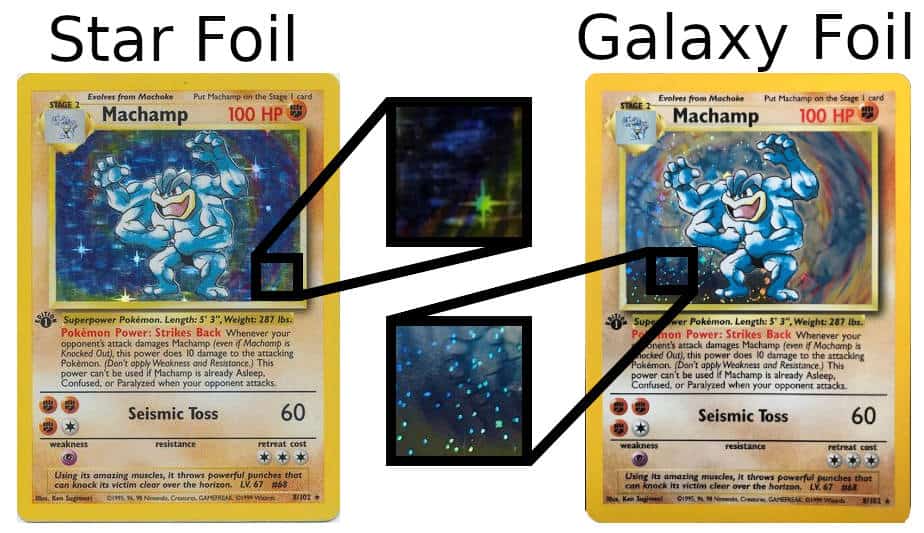
Galaxy or Cosmic Foil Machamp is found in every 2-Player CD-ROM Starter Set, it has cosmic foil instead of star foil that every other Base Set card has. Often times it is called an error/misprint card, but this isn’t true.
Red Cheeks Pikachu
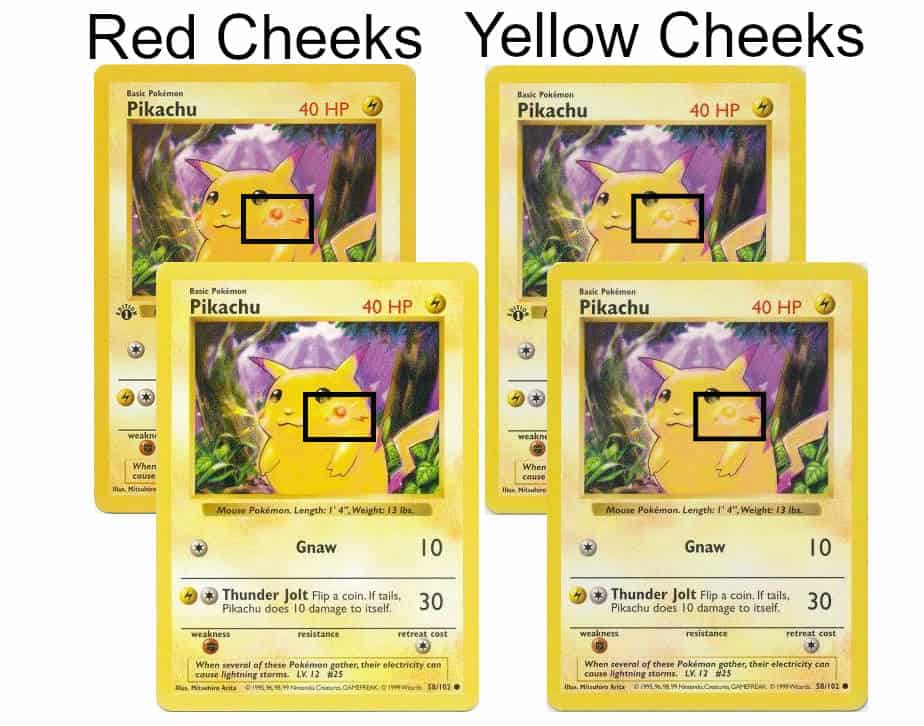
1st edition and shadowless Pikachu cards had a printing where Pikachu has red cheeks. These are only found in booster packs.
Red Cheeks Shadowless E3 Pikachu
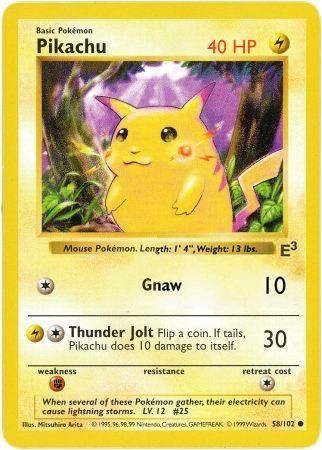
This is also considered a promotional card, given away at the Electronic Entertainment Expo in Los Angeles during May 13-15, 1999. It was printed with red cheeks. As I talked about in the section above. I’ve included it as a Base Set variant instead of a promotional card, but each collector can make their own distinction. There’s an E3 stamp on the card, where the set symbol normally is, which makes it different from other shadowless Pikachu cards.
Unlimited Yellow Cheeks E3 Pikachu
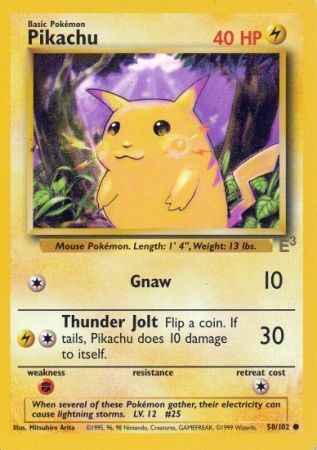
While the E3 variant mentioned above was released at the Electronic Entertainment Expo, this variant was available in “Nintendo Power” magazine’s September ’99. This new E3 Pikachu was given out with the new unlimited variant, so it has all the characteristics of an unlimited Base Set card including the corrected yellow cheeks, but this version, again, has an E3 stamp on it.
PokéTour Pikachu
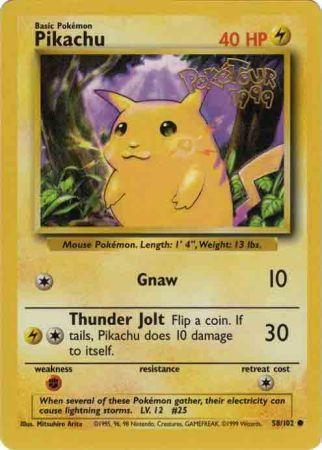
PokéTour Pikachu is considered another promo, but again I’ve included it as a Base Set variant. This card was included in PokéTour Bags distributed by PokéTour Members during September-October 1999 in Australia. There is a PokéTour Stamp at the top right of the art box that visually makes it different than an unlimited Pikachu.
CD Promo Shadowless Pikachu
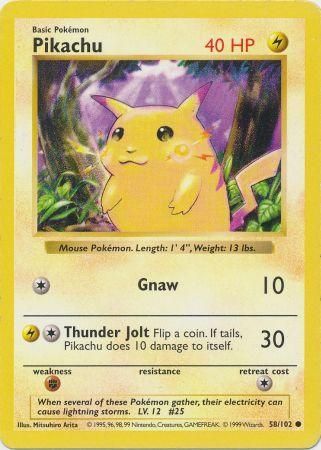
This card is had to tell a difference between any other shadowless Pikachu; however, this card was produced by Media Factory in Japan and was included in the Pokémon Song Best Collection CD. The difference between this card and it’s shadowless counterpart is the card stock used. The Japanese card stock is smoother and less grainy. It can’t be seen well without proper lighting angles, I’ve done my best to highlight this in the image below.
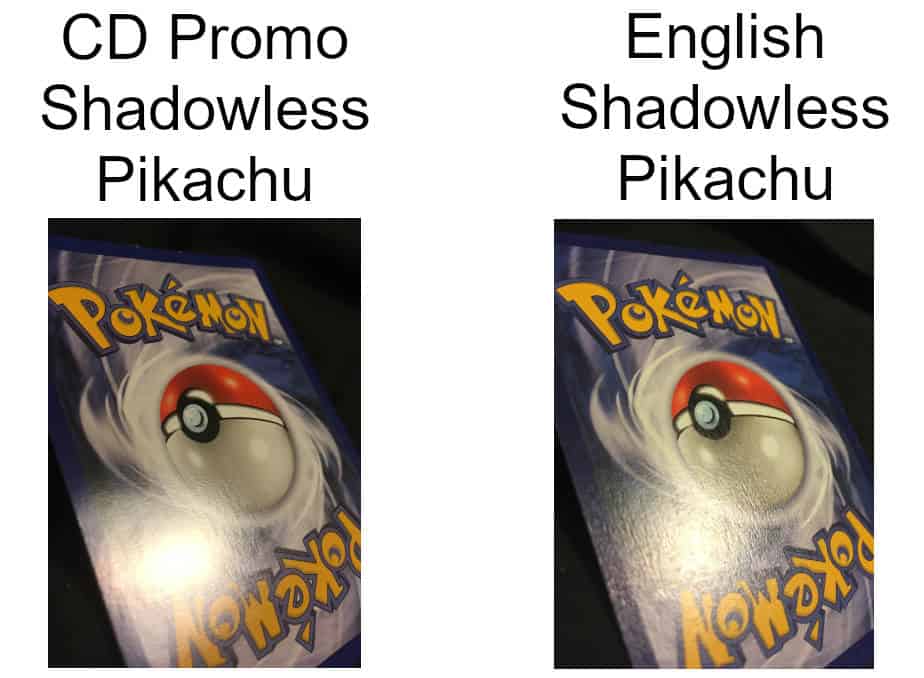
1st Edition Stamp Variants:
Base Set 1st edition stamps have a lot of inconsistencies that created a lot of variations in the stamps that some collectors collect. There are the following:
- Thick 1st Edition Stamp
- Thin 1st Edition Stamp
- Gray/Grey 1st Edition Stamp
- Off-Aligned 1st Edition Stamp
Thick and Thin 1st Edition Stamps
First, let’s talk about the difference between thick and thin 1st edition stamps. Below I’ve zoomed in on a couple of stamps.
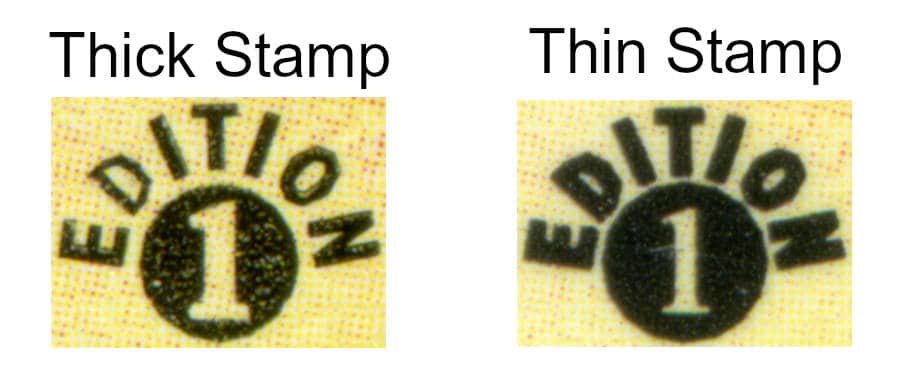
The name thick and thin comes from the 1 on the inside of the circle. In the old days of collecting these stamps were referred to as thick one 1st edition stamp and thin one 1st edition stamp, over time the one was dropped leaving the term thick and thin for simplicity. Because of this, it can be confusing for newer collectors who believe thick and thin refers to the thickness of the ink. Alas, it’s the 1 inside the circle that gives us the terminology.
The cause for the differences between these stamps has to do with the pressure the 1st edition stamping machine put on them. The more pressure caused thin stamps to have more ink applied to them creating the difference in the look.
There’s a fairly interesting story for how the thick and thin stamps came to be. The story goes, Wizards of the Coast (WotC) created the 1st print run of cards, they went to stamp the cards intended for 1st edition; however, their counts for the cards was off. WotC realized they needed more holographic foil cards to be printed, so more 1st print cards were sent into the stamping machine, but by this time the pressure used by the machine was increased creating a visual difference between the stamps. This is why the thin stamps are more common on 1st edition holographic foil cards. They are present on some of the non-holographic foil cards as well.
As far a rarity goes, it’s rarer to find a thick stamp holographic foil cards, but rarer to find a thin stamp non-holographic card.
Gray/Grey 1st Edition Stamps
Gray, which for the rest of this guide is the spelling I will use as I’m American, 1st edition were caused by having the printed cards sheets lay on top of one another without enough time for the ink to settle. This resulted in some of the ink drying onto the sheet above it. When the sheets were separated part of the ink was taken away leaving behind a gray stamp.
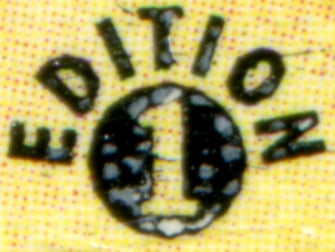
Here’s an image of some of the stamp being dried onto the back of a different card.
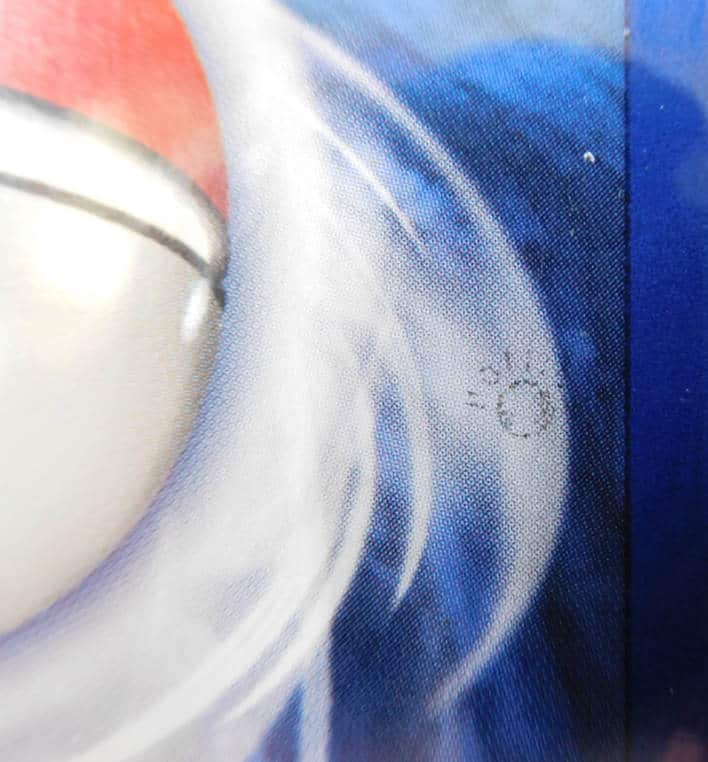
Overall, gray stamps are fairly rare to come by.
Off-Align 1st Edition Stamps
In order to understand this stamp, we’re going to need to see a close-up of the ghost-phantom Pikachu error/misprint.
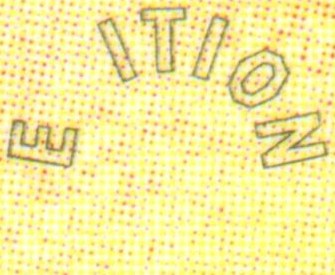
As you can see above there’s a distinct outline, now if we look at a close-up image of an off-aligned 1st edition stamp you’ll see this same outline appear.
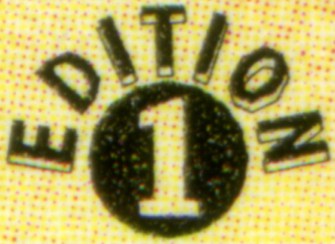
When not zoomed in the stamp looks like a 3D image:
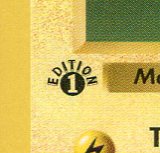
I’m unaware of why these outlines are there, but they are only on non-holographic foil cards. If the 1st edition stamp is applied directly on this outline you’ll get an aligned 1st edition stamp, and if you not you’ll get an off-aligned 1st edition stamp.
In my experience, off-aligned 1st edition stamps aren’t any rarer than an aligned 1st edition stamp.
Sealed Product
Base Set cards were released in a variety of sealed product including:
- Booster Boxes
- Booster Packs
- Blister Packs
- Theme Decks
- Gift Boxes
- Starter Decks
Due to the extensively long post, I’ll be creating a separate guide on all the different variants and products that were available for Base Set. Click Here to read that guide, I’ve gone through a lot to show the subtle differences in product, and how to tell what type of cards will be available through them.
Thank You
Thank you for reading. I hope you found this informative. If you enjoyed this article, please share it with others who would like to learn more about Pokémon. If there are any corrections that need to be made, contact me through the contact page. Finally, make sure to check out my other articles, I put a lot of effort into all of them.
